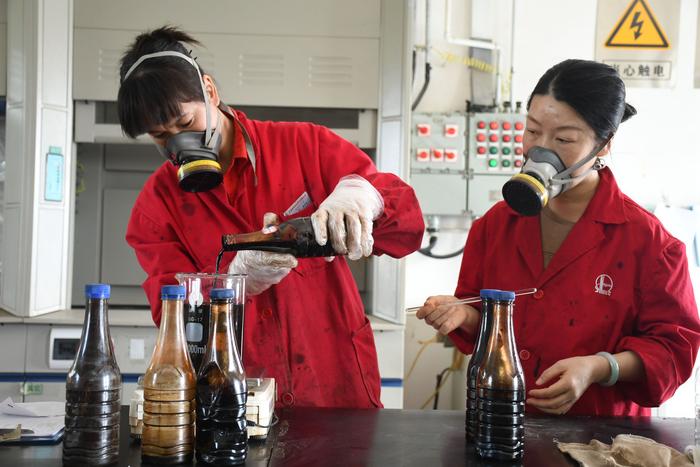|
| 2020-09-17 来源: 中国石化新闻网 |
| 石化新闻 |
中国石化新闻网讯 据能源世界网9月15日新德里报道,根据英国石油公司(BP)的一份最新报告显示,在截至2050年的至少一段时间内,全球能源需求将继续增长,在此期间,能源需求结构将转变为化石燃料的作用不断下降,而可再生能源和电力所占的份额将越来越大。 报告题为“BP能源展望2020”是基于三种情况,它们是有关政策和社会偏好的替代假设,旨在帮助探索未来30年可能产生的结果范围。 “快速”假设政策导致碳价格大幅上涨,而“净零”则随着社会行为的重大转变而强化“快速。 第三种情况是“正常营业’。 在这三种情况下,全球能源需求在新兴世界日益繁荣和生活水平的推动下增长。 随着能源效率的提高,一次能源需求在展望的下半年处于“快速”和“净零”状态。据 报告称,在“一切照旧”模式下,需求在整个《展望》中继续增长,到2050年将达到约25%。 据报告称,向低碳能源体系过渡将导致能源结构更加多样化,因为在这三种情况下,全球能源体系中碳氢化合物的比重都会下降,而随着世界电气化程度的不断提高,可再生能源的比重也会相应增加。 BP首席执行官Bernard Looney表示,尽管新冠疫情大幅减少了全球碳排放,但世界仍处于不可持续的道路上。不过,《展望》中的分析显示,只要企业和消费者采取果断的政策措施,做出更多低碳选择,能源转型仍可以实现。 该报告指出,在不同情况下,这种转型的规模差别很大,碳氢化合物在一次能源中所占份额从2018年的85%下降到2050年的65%-20%之间,可再生能源的比例上升到20%-60%。 该报告还称,风能和太阳能将引领可再生能源的快速发展,因为在未来30年的所有情况下,可再生能源是增长最快的能源来源。 BP表示,到2050年,可再生能源在一次能源中所占的比例将从2018年的约5%上升到‘净零’的60%,‘快速’的45%,‘一切照旧’的20%。”在开发成本持续下降的支撑下,风能和太阳能在这一增长中占据了主导地位。到2050年,风能和太阳能 所占比重 ,‘快速’将分别下降约30%和65%,‘净零’下降35%和70%。 要实现这一增长,就需要大幅加快利用可再生能源的产能建设。据该报告称,在“快速”和“净零”的情况下,风能和太阳能装机发电量在今年上半年的平均年增幅分别约为350-550吉瓦,而自2000年以来的年平均增幅约为60吉瓦。 郝芬 译自 能源世界网 原文如下: Global energy demand to continue growth with shift to renewable energy: BP The global energy demand would continue to grow for at least part of the period to 2050 and over this time, the structure of energy demand would shift to a declining role for fossil fuels by an increasing share for renewable energy and electricity, according to a BP’s latest report. The report titled ‘BP Energy Outlook 2020’ is based on three scenarios, which are alternative assumptions about policies and societal ?preferences and are designed to help explore the range of outcomes possible over the next 30 ?years. The ‘Rapid’ scenario assumes policies resulting in a sharp increase in carbon prices while the ‘Net Zero’ reinforces ‘Rapid’ with major shifts in societal behaviour. The third scenario is ‘Business-as-Usual’. “In all three scenarios, global energy demand grows, driven by increasing prosperity and living standards in the emerging world. Primary energy demand plateaus in the second half of the Outlook in ‘Rapid’ and ‘Net Zero’ as improvements in energy efficiency accelerate. In ‘Business-as-Usual’, demand continues to grow throughout the Outlook, reaching about 25 per cent higher by 2050,” said the report. According to the report, the transition to a lower carbon energy system would result in a more diverse energy mix, as all three scenarios saw a decline in the share of the global energy system for hydrocarbons and a corresponding increase in renewable energy as the world increasingly electrifies. “Even as the pandemic has dramatically reduced global carbon emissions, the world remains on an unsustainable path. However, the analysis in the Outlook shows that, with decisive policy measures and more low carbon choices from both companies and consumers, the energy transition still can be delivered,” said Bernard Looney, chief executive officer at BP. The report said that the scale of the shift varies significantly across the scenarios, with the share of hydrocarbons in primary energy declining from 85 per cent in 2018 to between 65 per cent to 20 per cent by 2050 and that of renewable energy rising to 20 per cent to 60 per cent. It added that the wind and solar would lead fast growth in renewable energy, as renewables are the fastest growing source of energy over the next 30 years in all the scenarios. “The share of primary energy from renewables grows from around 5 per cent in 2018 to 60 per cent by 2050 in ‘Net Zero’, 45 per cent in ‘Rapid’ and 20 per cent in ‘Business-as-Usual’. Wind and solar power dominate this growth, underpinned by continuing falls in development costs, lower in 2050 by around 30 per cent and 65 per cent for wind and solar, respectively, in ‘Rapid’ and by 35 per cent and 70 per cent in ‘Net Zero’,” BP said. The growth would require a significant acceleration in the build out of renewable capacity. It said that in ‘Rapid’ and ‘Net Zero’, the average annual increase in wind and solar capacity over the first half of the Outlook was about 350 gigawatt (GW) and 550 (GW), respectively, compared to the annual average of about 60 GW since 2000. |








